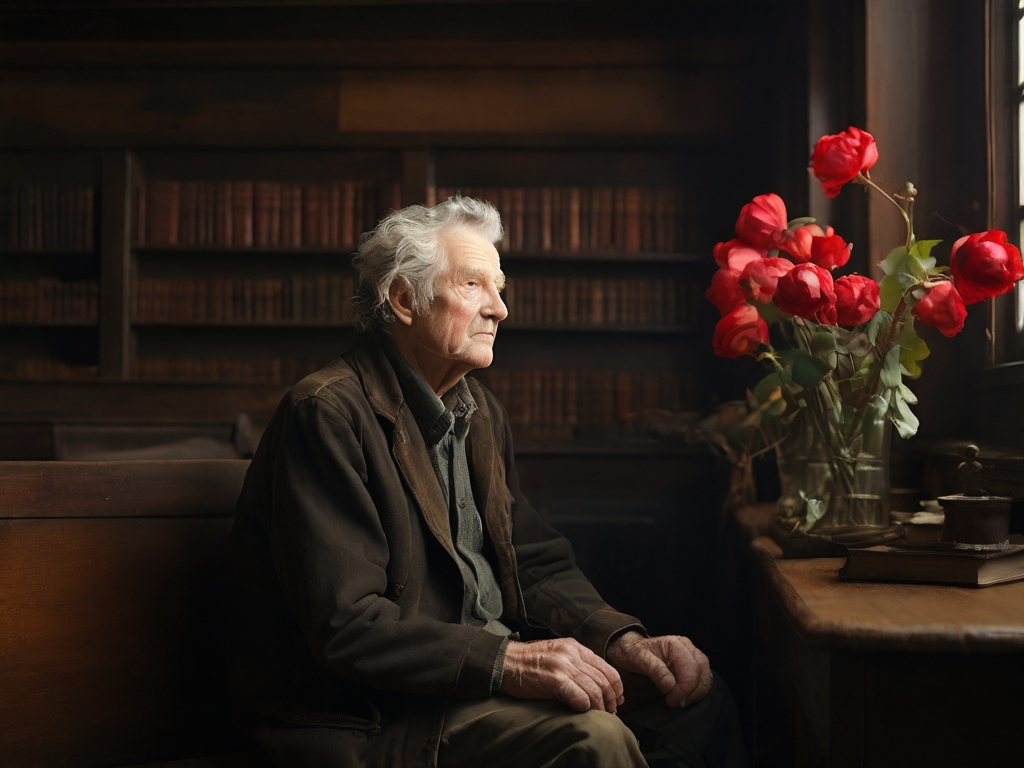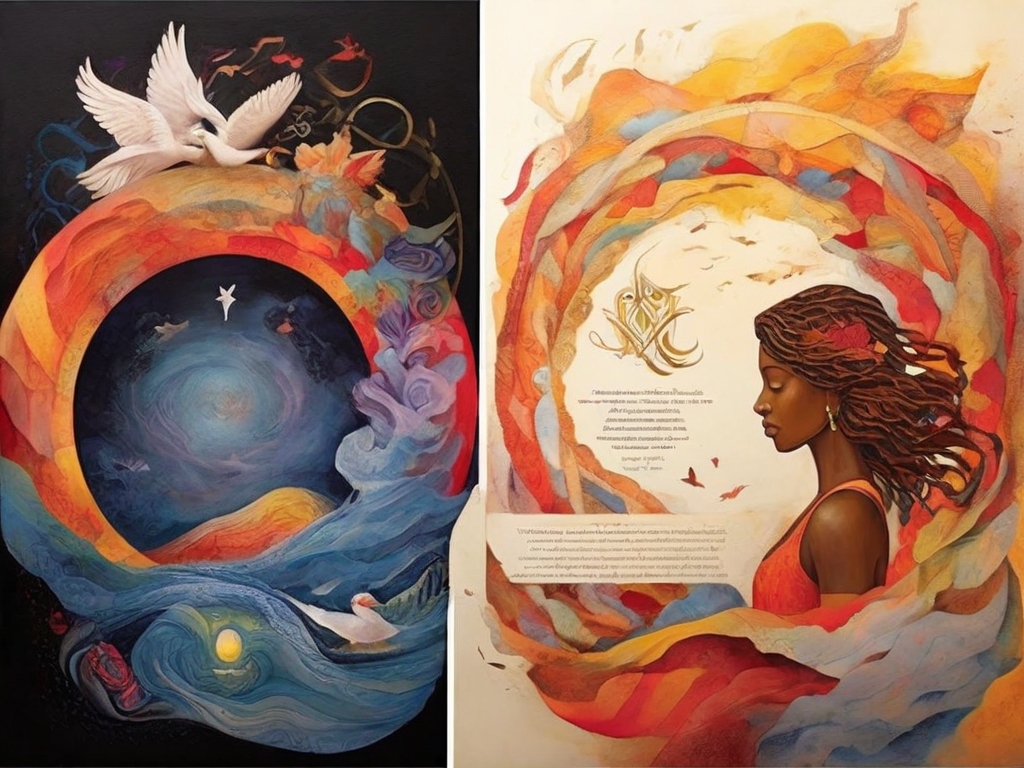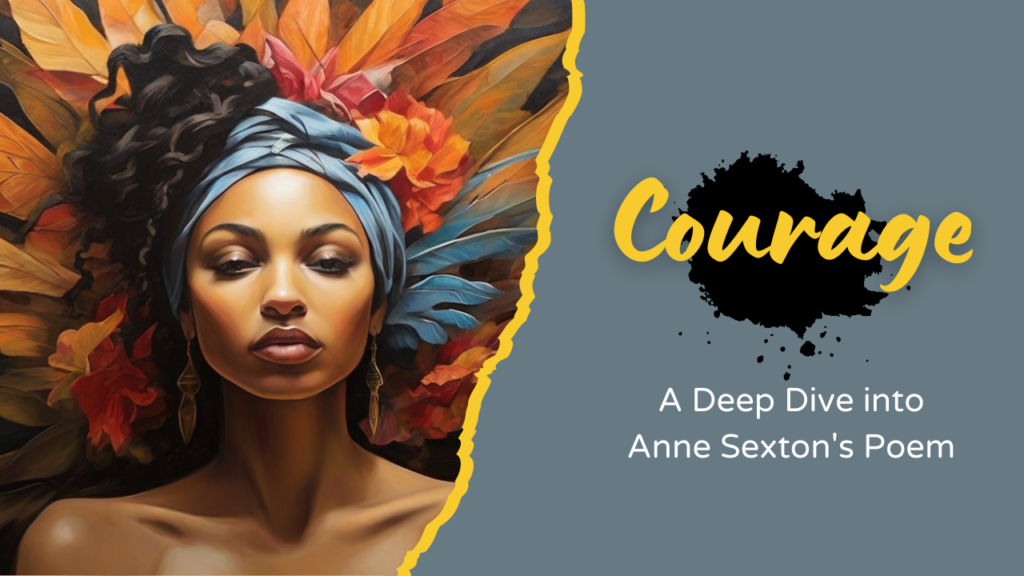Courage: A Deep Dive into Anne Sexton's Poem
Anne Sexton’s poem “Courage” is a moving look at what it means to be brave at different points in life. The poem is split into four stanzas, and each one reflects a different stage of life from childhood to old age. In the first line, Sexton talks about how innocent and vulnerable childhood is. She then uses examples of times when courage is needed, like when you have to face monsters under the bed or stand up to bullies on the field. During this time, you learn the basics that will help you become brave later on.

As the speaker moves into young adulthood (shown in the second stanza), Sexton writes about the problems and unknowns that come with it. Here, courage means doing things like going after your dreams even though you’re afraid of failing or figuring out how to be in a relationship when things get complicated. Sexton’s imagery clearly captures the intense emotions and tumultuous nature of youth, emphasising how important courage is for making your way forward.
As the third stanza moves into middle age, it deals with the truths of duty, loss, and time going by all the time. Sexton writes about the bravery needed to deal with illness, grief, and the spiritual questions that come up as you get older. Even though bad things will happen, the speaker stresses how important it is to be strong and resilient to face life’s challenges head-on.

In the fourth stanza, Sexton thinks about getting old and dying. In this case, courage means facing the fact that you are going to die and being able to find meaning and purpose in your last years. The images that Sexton uses show the bittersweet nostalgia and knowledge that come with getting older. They also show how important it is to be brave when facing the last parts of your life.
Sexton uses strong images throughout the poem to make the reader feel like they are really going through each stage of life, which makes them feel empathy and think about their own lives. By looking at the different kinds of courage people have at different points in their lives, Sexton gives us a more complex picture of grit, persistence, and our ability to grow and change. “Courage” is a powerful song that reminds us that courage is more than just not being afraid. It’s also having the strength to face problems head-on and accept life’s challenges with strength and grace.
1. Title Analysis: “Courage,” the title of Anne Sexton’s poem, sets the tone for the poem’s study of bravery and strength throughout the verses. The word “courage” draws the reader’s attention right away to the poem’s main idea, implying that the work will be about dealing with problems with strength and drive. By using such a simple and powerful title, Sexton gets the reader to think about the different kinds of courage that are shown in the poem and how important they are in the context of human experience and existential battle.
2. Introduction to the Poem: “Courage” by Anne Sexton is a deep reflection on what it means to be brave and strong in the face of life’s problems. The poem is split into four stanzas, which each reflect a different stage of life, from being a child to being old. Sexton uses vivid language and vivid images to explore the difficulties and trials people face at each stage, stressing how important courage is in getting through these times. Sexton takes readers on a trip through the complexities of human life as the poem goes on. He does this by showing them how to be strong and resilient in the face of fear and uncertainty.
3. Structure and Form: “Courage” is written in structured free verse, with line breaks and lengths that change between stanzas. Without having to worry about rhyme or metre, this loose structure lets Sexton explore different stages of life and ideas in a natural way. The four stanzas of the poem represent the stages of life, from childhood to old age. This gives the poem a structure for exploring courage at different stages of life. Sexton also uses enjambment and caesura to control the poem’s pacing and rhythm, which makes it more emotional and leads the reader through times of thought and self-reflection.
4. Language and images: Throughout “Courage,” Sexton uses vivid language and images to make the reader feel things deeply. From the innocence of childhood to the wisdom of old age, Sexton’s pictures paint a vivid picture of life, showing both the good and bad parts of the trip. There are a lot of metaphors and similes that make powerful comparisons that show how complicated courage and resilience are. Sexton uses vivid details and emotive language to pull readers into the real experiences of each stage of life, which helps them understand and reflect on their own lives.

5. Themes and Motifs: The main ideas in “Courage” are strength, fear, death, and the passing of time. Sexton tackles these ideas through recurring themes like innocence in childhood, idealism in youth, self-reflection in middle age, and thinking about old age. Each stanza talks about the problems and unknowns that come with different times of life. This shows how everyone has to deal with problems and find the strength to keep going. Darkness and light, battle and victory, are themes that run through the poem. They show how dualistic people are and how powerful courage is.
6. Tone and Mood: “Courage” has a thoughtful and introspective tone that shows how deeply the speaker is interested in philosophical questions and universal truths. Even though the poem has dark and sad parts, there is also a strong sense of hope and strength that comes through. Sexton’s words and pictures create a mood that is both sad and transcendent, letting readers deal with the difficulties of life’s journey while also finding comfort in beautiful and graceful moments. In the end, the poem has a tone of quiet courage and acceptance. It recognises that battle is inevitable but also believes that people can grow and change.
7. Speaker and Perspective: The person who is speaking in “Courage” is reflective and introspective. They use their own experiences and views to talk about things like bravery and strength. Even though the speaker’s voice is personal and subjective, the speaker’s thoughts are also universal, allowing readers to see themselves in the battles and successes shown in the poem. From the speaker’s point of view, Sexton shows how complicated the human mind is and how people will always be looking for meaning and purpose in life’s challenges.
8. Interpretation and Analysis: “Courage” can be seen as a reflection on how people can bounce back and grow when things go wrong. Each stanza gives a detailed look at courage at different points in life, focusing on the struggles and successes that come with each stage. Through vivid images and evocative language, Sexton gets readers to think about their own fears, losses, and changes. In the end, he proves that courage is the key to getting through life’s problems. Though the trip may be hard at times, the poem reminds us that we find meaning and purpose in the midst of uncertainty by being brave and not giving up.
9. Conclusion: Anne Sexton’s “Courage” shows how strong the human spirit can be in the face of life’s problems. The poem gives us deep insights into what bravery and strength are by looking at different times of life and themes. From the innocence of youth to the thought of old age, Sexton’s language and images paint a vivid picture of what it means to be human. They encourage readers to face their own fears and doubts with courage and grace. The moving song “Courage” is a powerful reminder that even if the journey is hard, it is through bravery and determination that we find our real strength and resilience.

